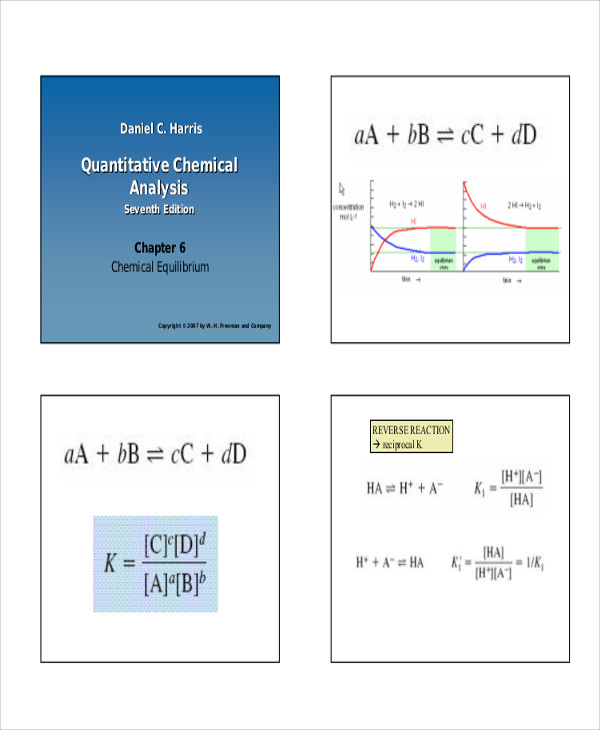Quantitative Chemical Analysis Solution Manual
Get instant access to our step-by-step Quantitative Chemical Analysis solutions manual. Our solution manuals are written by Chegg experts so you can be assured of the highest quality!
What are Chegg Study step-by-step Quantitative Chemical Analysis Solutions Manuals? Chegg Solution Manuals are written by vetted Chegg Analytical Chemistry experts, and rated by students - so you know you're getting high quality answers.
Solutions Manuals are available for thousands of the most popular college and high school textbooks in subjects such as Math, Science (, ), Engineering (, ), and more. Understanding Quantitative Chemical Analysis homework has never been easier than with Chegg Study. Why is Chegg Study better than downloaded Quantitative Chemical Analysis PDF solution manuals?
It's easier to figure out tough problems faster using Chegg Study. Unlike static PDF Quantitative Chemical Analysis solution manuals or printed answer keys, our experts show you how to solve each problem step-by-step. No need to wait for office hours or assignments to be graded to find out where you took a wrong turn. You can check your reasoning as you tackle a problem using our interactive solutions viewer. Plus, we regularly update and improve textbook solutions based on student ratings and feedback, so you can be sure you're getting the latest information available. How is Chegg Study better than a printed Quantitative Chemical Analysis student solution manual from the bookstore?
Our interactive player makes it easy to find solutions to Quantitative Chemical Analysis problems you're working on - just go to the chapter for your book. Hit a particularly tricky question? Bookmark it to easily review again before an exam. The best part?
As a Chegg Study subscriber, you can view available interactive solutions manuals for each of your classes for one low monthly price. Why buy extra books when you can get all the homework help you need in one place?
Book Preface Goals of This Book My goals are to provide a sound physical understanding of the principles of analytical chemistry and to show how these principles are applied in chemistry and related disciplines— especially in life sciences and environmental science. I have attempted to present the subject in a rigorous, readable, and interesting manner that will appeal to students whether or not their primary interest is chemistry. I intend the material to be lucid enough for nonchemistry majors, yet to contain the depth required by advanced undergraduates. This book grew out of an introductory analytical chemistry course that I taught mainly for nonmajors at the University of California at Davis and from a course for third-year chemistry students at Franklin and Marshall College in Lancaster, Pennsylvania. A significant change in this edition that instructors will discover is that the old Chapter 7 on titrations from earlier editions is missing, but its content is dispersed throughout this edition. My motive was to remove precipitation titrations from the critical learning path.
Precipitation titrations have decreased in importance and they have not appeared in the last two versions of the American Chemical Society examination in quantitative analysis. The introduction to titrations comes in Chapter 1. Mx341 avr manual voltage regulator. Kjeldahl analysis is grouped with acid-base titrations in Chapter 10. Spectrophotometric titrations appear in Chapter 17 with spectrophotometry. Efficiency in titrimetric experimental design is now with quality assurance in Chapter 5.
Precipitation titrations appear with gravimetric analysis in Chapter 26. Gravimetric analysis and precipitation titrations remain self-contained topics that can be covered at any point in the course. A new feature of this edition is a short “Test Yourself” question at the end of each worked example. If you understand the worked example, you should be able to answer the Test Yourself question. Compare your answer with mine to see if we agree. Chapter 0 begins with a biographical account of Charles David Keeling’s measurement of atmospheric carbon dioxide.

Quantitative Chemical Analysis Solutions Manual Download
His results have been described as “the single most important environmental data set taken in the 20th century.” Boxes in Chapters 3 and 19 provide detail on Keeling’s precise manometric and spectrometric techniques. Box 9-1 discusses ocean acidification by atmospheric carbon dioxide.